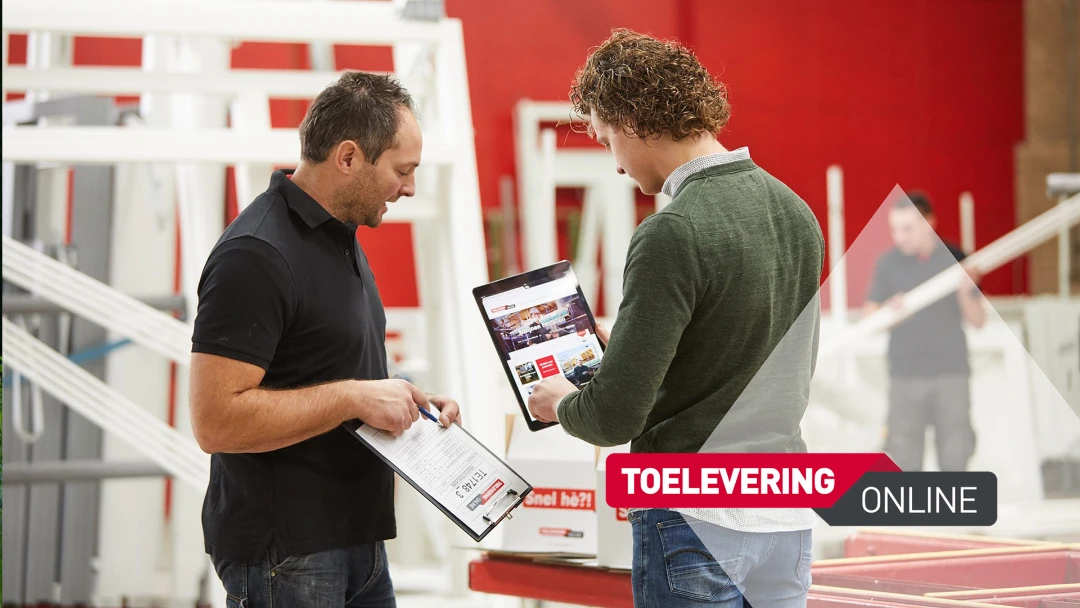The company
Technical Trading Inc is a family owned technical trading company with an annual revenue of over € 100 million. The company’s head office is located in the Eastern part of the Netherlands and it has several branch offices all over the country.
Each branch office has its own specialty, resulting from the fact that these were stand-alone companies that have been acquired by Technical Trading Inc. These specialties consist of either a focus on a certain market segment (i.e. telecom, or industry), or a certain product category (i.e. local area network solutions or piping products).
The company has been developing well, both via acquisitions as well as autonomously, driven by the entrepreneurial spirit and drive of the branch office MD’s. The branch offices operate at arms lengths basis from each other and from the holding company that functions as a financial holding rather than an operational or strategic holding company.
The challenge
Peter, CEO of Technical Trading Inc recognized two market developments that got his attention. One was the increasing pressure on (and transparency in) value chains, causing price pressure on pure technical traders that offer limited added value. The second was the increasing need for installation utilization and work pressure on project departments among his customers.
Peter set out a new strategic direction, which he called Technical Installation Maintenance Services. This service was to help clients manage their technical installations towards higher returns on investment and to support their client’s maintenance departments in reducing their growing workloads. The vehicle for this strategic change was to be a new business unit, called TIMS, Technical Installation Management Services.
The only problems were that
- Technical Trading Inc had never before developed a totally new business itself (since the mid-nineties all business had been acquired),
- this new service required collaboration between autonomous branch offices and
- this strategy positioned the Holding as strategy office, a role that they had not taken before and felt as a threat to the autonomously operating branch office MD’s.
Peter asked us to design and execute a program that would lead to building a self-sustaining new business unit, while solving the above-mentioned organizational challenges.
Our approach
As getting into this line of business and the needed inter-branch office co-operation was new to Technical Trading Inc, we created a program that dealt with both aspects.
The program needed to lead to the design and implementation of a totally new business, but also to improve cooperation among branch offices and the acceptance of the holding taking a more strategic role than it had previously done.
We set out on a journey that finally took nearly two years and resulted in achieving all above mentioned goals. Moreover, the new business unit is now a multi-million revenue generator and has secured a number of recurring revenue contracts. The way of working we implemented is being used throughout the whole company as the standard for strategic business development.
Seven stages got Peter and his team where they are today:
Forming a coalition of the willing
Familiarization with Installation Management business models
Customer profile and value proposition design
Customer Journey and Business model design
Securing launching customers
Joint prototyping and pivoting
Scaling up and organizational embedding
Each stage served a certain purpose in the adventure, some were more rational, some more emotional, but we would not have been able to pull it off without any of the stages. Below you will find a concise description of each of the stages and our most important lessons learned.
Forming a coalition of the willing
Because the sort of intercompany co-operation that was required for this endeavor was new to Technical Trading Inc, and several senior managers and employees showed quite some resistance to this new strategy, we decided to start the program with forming a coalition of the willing. This team was to work in and on the program, with direct support from Peter and his board.
We realized that without evidence of real success we would never conquer internal criticism. So, we just decided to start the program with a group of people that were sufficiently motivated and capable to get things going and worry about getting the rest of the company on board later.
As, later in the process, the new business started to really pay off even the biggest early criticasters wanted to get a piece of the pie and actively joined in. Success has many fathers.
Familiarization with Installation Management business models
As installation management services (actually all paid services) were totally new for Technical Trading Inc, and also for the coalition of the willing, we needed to establish a joint frame of reference. A common language that would allow us to communicate about what is was that we were about to develop, the kind of customer problems we wanted to solve, the returns it would generate, the investments it would require and so forth.
To achieve this, we organized a one-day kickoff session with the coalition. In this kickoff session we shared all sorts of information on Installation Management Business models and value propositions, we gave examples of service providers active in this field, customer benefits and monetization models.
We also shared our 7 phases program with the team.
On all topics we asked the team to brainstorm on what could be further improved, what should be left out, what should be added and what risks we would have to manage along the program.
Gradually the team developed a joint and attractive image of the program ahead and established a mutual frame of reference and jargon that would prove itself valuable in later stages.
Customer profile and value proposition design
Armed with new knowledge about installation management services we then organized a next two-day sprint-like session, in which we essentially designed the first draft of the new business.
We started off by introducing the team to customer persona, value proposition and business model design. Most team members had already heard about these models, but they had never actually experienced the power of working with them, especially when applying a certain rigor and mental discipline to the process.
The group was split into five teams, and each team was to focus on a market segment or customer type that they knew most about.
The teams were handed the customer profile and persona canvas and brainstormed about the characteristics of the companies that they wanted to serve. Topics like: who is in charge of installation management (decision making unit, DMU), what are his jobs to be done, what pains and gains does this DMU experience while managing installations, what rational and emotional factors come into play were all extensively brainstormed, discussed and mentally scrutinized into a clear and vivid image of the ideal customer. The team shared the results with other teams and further fine tuning improved the images even more.
Next step was to draft a first value proposition for these imaginary clients.
Again, the teams were handed a set of canvases and started brainstorming on products and services they could sell, benefits of these products and services to their customers, and these benefits were translated in to first business cases. A round of pitch-like presentations and subsequent voting led to prioritization of a long list of potentially new propositions.
Charged with energy and enthusiasm about the possibilities and business potential, the group left the two-day meeting and got back to their regular jobs. The criticasters in the company were still not involved, for their attitude may have jeopardized the early development.
Customer Journey and Business model design
After having organized two large scale meetings we wanted to see if the enthusiasm would also hold when taking this work back into the more normal work environment.
So, as a next step we wanted to take the design of the new business even further and the teams started working on the design of a customer journey that would bring customer and value proposition together and a business model that would be able to market, sell and deliver the new propositions.
We asked the teams to take own responsibility for designing the business model and customer journey, but offered support in the form of design tools, process and expert guidance from our consultants. That proved to be a bridge too far. Daily work and the lack of experience in thinking outside the box (teams had been inside the box for many years and even decades) prevented the teams from becoming productive and delivering the needed results.
Our consultants took back control and started guiding the teams towards well designed business models and customer journeys that were sufficiently enabling the new business but also sufficiently close to the existing ways of working to keep things feasible and practical.
All results were then visualized in attractive presentations and made ready to be brought ‘outside the building’ in the next stage.
Securing launching customers
We were now 3 months in the program and had established a coalition of the willing, a joint set of goals, customer profiles, value propositions, customer journeys and business models. It was time to get out of the building and see whether everything we had been working on would encounter some enthusiasm in the outside world. We set out to find companies and persons that we could share our ideas with, and ideally find a few companies that would be so enthusiastic that they would become our launching and co-development partners.
As Peter’s (remember, de CEO of the company) vision on becoming an installation management solutions provider did not come out of thin air, there were already a few parties that had expressed certain interest in this type of solutions. And during the first few months of the program Peter had been keeping these companies in the loop on recent developments.
On top of this, some of the salespeople in the coalition of the willing had also been informing a few of their clients on recent developments, leading to initial interest in the new value propositions.
Additional brainstorm sessions and desk research (primarily via LinkedIn) led to the formation of a list of over a hundred companies and persons for whom the new solutions could have been interesting.
The teams started approaching these companies and started selling the developed ideas to them. In some cases that worked, but in many cases it did not. Especially the potential clients that did not have a manifest need for the solutions (because they weren’t aware of any problem) showed no interest.
At first the sales guys of Technical Trading Inc did not want us present in their client meetings. That’s a kind of behavior we are quite familiar with and usually we give the guys the opportunity to do their work on their own. But after several unproductive meetings with their clients we were allowed to join a few of these meetings and immediately realized what went wrong.
These guys were product salesmen, selling a well-defined product to a customer that was already aware that he needed something like that.
These guys were presenting made to measure services as if they were standard products, instead of unraveling a complex customer situation first, establishing a need thereafter, and explore together with their customers what may happen when this need would not be fulfilled.
We started teaching and helping them with consultative selling, using the famous SPIN method as developed by professor Neil Rackham. Sales meetings turned into investigations, and our inquisitive line of questioning started leading to uncovering real needs of real customers that we could solve with our new value propositions.
Three customers were found that got so interested in the new propositions that they wanted to become the co-developer and co-investor in the new developments.
Also another breakthrough was on the verge of occurring in the program.
Joint prototyping and pivoting
Now real customers were getting involved, which meant that also the formerly critical MD’s of the branch offices had to embark on this new ship. Which they did.
For each of the three launching / co-developing customers a project team was formed, consisting of a project lead, a technical lead and a commercial lead, supported by a RevelX consultant. Each project now started developing in its own pace, involving its own set of stakeholders, suppliers and commercial / financial arrangements.
In this phase it’s nearly impossible to work according to pre-defined formats, processes and standards. It does however require the adherence to an overarching roadmap and set of business principles to make sure that whatever happens or no matter how far you may be pushed from the original course, you will always find your way back.
The roadmap we prepared for each of the teams had following overall milestones:
- Customer problem identified
- Solution direction agreed upon
- Joint project team (customer, Techical Trading Inc, RevelX, suppliers) established
- Business case and project plan agreed up on
- Contracts in order and signed
- Project management structure in place
- Functional design agreed
- Technical design agreed
- Mockup or prototype ready
- Prototype factory tested
- Prototype customer site tested
- Prototype business case and benefits proven
Now although this may look like a totally orderly linear process, in fact it is far from that. We have found ourselves in step 4, realizing that we missed something in step 2 and came to the realization that findings in step 8 lead to new opportunities for step 7, and so forth. This is unavoidable. But these roadmaps did help tremendously in always finding our way back to the main track, no matter how far away we’ve found ourselves from our original course from time to time.
We gradually introduced the following set of principles:
-
- Be open minded, think a like a designer or an architect
- Display no defensive or offensive behavior, look for solutions in stead
- Focus on the constraint, the problem that needs to be solved now
- Keep an eye on the bigger picture, where are we heading
- Always be on the lookout for risks and additional opportunities
- Be open and transparent, even financially and emotionally
- Ask the questions which answers frighten you most
At the end of this phase, 3 prototypes or minimum viable products (solutions) were in actual operation and were largely co-funded by our launching and co-developing customers.
Scaling up and organizational embedding
The final phase of the program was to scale up the initial successes, both in the market as well as in the organization of Technical Trading Inc.
In one customer case our solution was implemented at their most important site in the Netherlands. Luckily this customer had several dozens of other sites, all over the globe. And our sponsor happened to be the corporate innovation manager (not by accident of course), whose main responsibility it is to scout useful innovations and to get these implemented on a global scale. Currently a program is running to do precisely that, although this doesn’t mean that scaling this solution is easy. It requires strong sales support from Technical Trading Inc. But there were also other scaling issues.
The software part of our prototype was based upon a mobile app, developed by a local app developer. Precisely in the way one would expect when building a minimum viable product. However, in scaling up the product it needed to become an integrated whole with the customers IT landscape, it needed to have a robust database and a user interface that is foolproof.
We helped Technical Trading Inc with vendor selection and we even took the role of product owner during the development of the scaled and industrialized solution.
The two other prototypes also proved their value but had limited scalability potential within the organizations of our launching customers. So we got back to our long list of potential customers, the customer journey we had drafted in stage 4 of the project and together with the marketing department we set up a marketing and sales plan (including deploying growth hacking tactics and techniques). This led to several dozens of sales leads, of which several have converted to customers and others are still in the lengthy sales cycli which are so typical of complex B2B sales. These sales cycli are now being orchestrated and executed by the branch offices with strong involvement of the branch office MD’s, who in the meantime have gotten totally on board with the new business direction.
Finally, the members of the original coalition of the willing have returned to their own branch offices in which they are now the installation management solutions specialists and working on further scaling this new business line.
But, as people in an organization retire, switch jobs, forget about things, etcetera, we realized that we needed to capture and document all that we did and learned. So, we finalized the project and our involvement with drafting the Installation Management Services handbook in which we described our journey, all used thinking models, tool, checklists, created sales pitches, business models, how-to lists and everything else that we had come across and had found useful during this process.
A note on Program and Change Management
Although not an actual phase in the program, it is important to share a note on program management as this has been the most constant factor in the process.
When we started the program, we realized that the over-seeable set of activities at the start would soon develop into an exploded portfolio of tasks, results, plannings, action lists, opinions, ideas, (potential) conflicts, company politics, and so forth. All potential distractions from our main course.
To make sure that at all times we would maintain a clear view on the most important aspects of the program, and we would consciously and consistently keep on moving towards our bigger goal, we introduced a rather rigorous but light and practical form of program reporting and management.
Starting point was the 7 stages overall program and planning we introduced in the beginning of the process and in this document, and the 12 milestones used in stage 6 (the longest stage of the program).
On a bi-weekly basis each team was to report and to present to a steerco (consisting of the board and a RevelX partner) on:
- Where are we in the overall program (and in particular in the 12 milestones in stage 6)
- What has been done in the last two weeks
- What’s on the planning for the coming two weeks
- What’s at risk
- What other opportunities do we see
- How are people getting along, what friction do we see or expect
- How are we going to solve this
- In what area’s do we need a steering committee / board support
Thanks to a rigorous discipline, the collective brainpower of the steering committee has been available to the project team for the entire duration of the project (in the whole period only 3 steering committee meetings were cancelled). The steering committee was able to provide all sorts of support varying from providing oversight and painting the bigger picture, to mediation between quarreling co-workers.
Results
Finally, the whole process has led to:
- A totally new and recurring revenue stream of several million Euro per year with a much higher margin than in the traditional trading business
- A much higher added value in the value chain, limiting risks of being put under price pressure or worse, being eliminated
- Several new and more strategic relationships with customers
- A fully embedded innovation and new business development process which enables the organization to continue to innovate and grow its relevance to customers and other stakeholders
- And last but not least, the proud feeling within the company of being able to create totally new business from scratch
Technical Trading Inc.
This document describes a typical example of our work with a typical client of ours we fictionally called Technical Trading Inc. Of course, this company exists in real life but because of the nature of what we are about to share we thought it would be prudent to not disclose any real names. Also other facts about the company are fiction but in line with the actual situation.
The reason for sharing this information is to provide insights on what it takes to get a company that has had the same business model for decades really move into a new line of business.


















